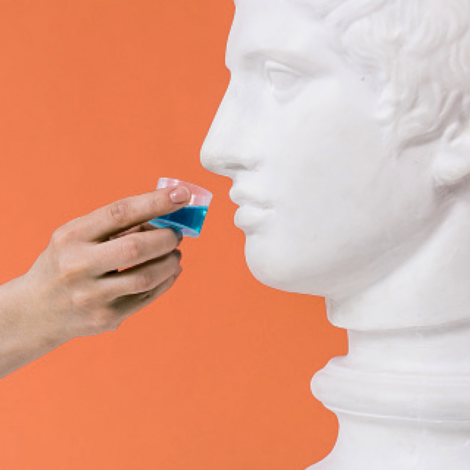How much would you pay for the “best version of yourself?” The version with all the newest software and firewalls, fully optimized and functioning without the glitches.
Well, there’s a gym in Manhattan’s West Village which has put a price on it: $10,000 a month.
Continuum opened in September and is a “biohackers” paradise, billed as the most expensive gym—or “luxury wellness club”—in the world, where the super-rich go to be analyzed, diagnosed and trained. It is limited to 250 members, with a waiting list ten times as long, and potential venues opening in Los Angeles and Dubai.
Upon joining, members undergo dozens of tests: aerobic threshold, resting heartrate, cell health, toxic load, gut health, brain chemistry, hydration, inflammation, REM sleep cycles. The data is fed into Continuum’s artificial intelligence model, creating a “digital twin” of the individual, which lives on an app in their phone and looks like a glowing orb.
Using an Oura ring to monitor physical activity, this digital representation is able to mutate in real time to reflect the current state of its human twin and prescribe exactly what they need to do next to get themselves into perfect condition: how many push-ups that day; whether they need to go on a red light therapy bed; when to sleep.
“The idea is to create the best version of you on a daily basis,” says Jeff Halevy, 45, the chief executive. “I’m not saying the membership is cheap, but if you look at the price from a value perspective, it’s very easy to justify the roughly $300 a day.” Most of his members were previously spending that sort of money on different biohacking treatments from individual vendors. He has just put it all under one roof and one price tag. “So it’s not crazy.”
Continuum is split across two floors of a mansion building, with a velvet rope outside and a doorman.
Personal trainers are called “human performance specialists” and staff members are dressed in shades of beige. They wear earpieces and know exactly which type of water each member drinks and what they eat from the café (one person doesn’t like onion so they make sure there is something on the menu that’s not “onion-forward”). For some members they even ship in whole meals from favorite restaurants.
“We call our clientele ‘discerning’,” Halevy continued. “We remove virtually every friction you could imagine.”
The upper floor is about “expending energy,” he said. It includes the gym, where the machines operate using compressed gas rather than weights, and the room where testing takes place when a member joins.
This includes a treadmill for VO2-max tests, where you wear a mask and run until you can’t carry on, testing how much oxygen you can use; resting metabolic rate tests, which show how many calories you burn at a standstill; blood tests; and a Dexa (dual-energy x-ray absorptiometry) scan, which analyzes bones. This is followed by an analysis of your body’s movement in the gym (the current version of me scores two out of three—a scoring system which feels a little broad for somewhere so zoomed-in).

Continuum is a hypochondriac’s dream, every diagnosis diagnosed, every measurement measured. “There’s no one who puts together a more comprehensive data set than we do,” Halevy said.
The AI then spits out, day by day, what you should be doing. “We don’t offer a buffet, we offer a blueprint,” he said. Looking at his digital twin today, he should be doing a Swiss body saw, fewer squats and lighter weights than normal because of his sleep pattern.
Downstairs looks like a private club and is about “cultivating energy”—with sessions also dictated by your digital twin. There is a zero-tolerancy policy on photographs. “Since Covid, super high-performers have a different relationship with work, they have got a bit looser,” said Halevy, who previously sold a wellness AI startup and another New York City fitness club.
“I came in on a Monday morning and the manager of an enormous private equity fund was taking some Zoom meetings in a work room. He had worked out and then he was getting a massage, then jumping in the sauna. I couldn’t believe what I saw because it was not something that would have happened pre-Covid.”
The members Halevy mentions—but does not name—are either former professional athletes or finance titans. No wonder they’re all about optimization. The float therapy room, where you are suspended in salted, body-temperature water, replicates the amniotic experience of the womb. It can give you 45 minutes of deep sleep immediately. “We’re in a major city, time crunched, everybody wants stuff quickly, and we can give you deep rest even on demand. It’s priceless.” Well … not technically.
In another room is a nap pod, which puts you in a “zero-gravity” position (at a body angle designed to mimic the feeling of weightlessness) and plays sound meditations. Many members take a shot of espresso and, after setting an alarm for the second the caffeine metabolizes, immediately get into the pod, nap for 20 minutes and emerge fully charged (hopefully).
There’s the hyperbaric oxygen chamber, a person-length horizontal pod which looks like it could be launched into space, covered in switches and dials. Sliding the window shut behind me, I lie down underneath a weighted blanket and the air pressure is increased for 45 minutes. Ears popping as I descend, it is the equivalent of being 50 feet underwater and is said to help muscle repair by over-oxygenating the body. Michael Jackson was an “early adopter”. Many take their laptop inside, so they can get through their emails. I am not entirely certain—during or after—of quite what it has done to me.
“It’s a multi-six-figure piece of equipment,” said Halevy, “as is the red light therapy machine”—which looks like a sunbed. It is said to reduce inflammation and improve skin elasticity by stimulating the mitochondria in the body’s cells.
Halevy grew up in New Jersey, running with a wild crowd of punk rockers as a teenager, awash with booze and drugs. At 22, he went to rehab and left sober—but weighing 280 pounds and smoking a pack of cigarettes a day.
He soon got into kickboxing—and discovered biohacking, the never-ending quest to optimize your health. “I started studying strength, conditioning and physiology and realized there were cheat codes, scientifically sound ways of doing things with demonstrable results. I was trying to hack my way to being infatigable.”
Today he is a fanatical “hacker,” checking his bloods every 90 days to monitor micronutrients. He uses the results to alter the supplements he takes (currently vitamin D and dehydroepiandrosterone, a hormone said to promote muscle strength). He also has regular polysomnography, a diagnostic test on sleep, performed in a laboratory.
How does he feel about the current obsession with longevity—biohacking your way to a longer life? “It’s very difficult, unless you have a crystal ball, to sell longevity,” he said. “To truly deliver on that promise is nearly impossible. Instead we promise to give somebody the best version of themselves day after day after day.”
Megan Agnew is a features writer at The Times and The Sunday Times of London




